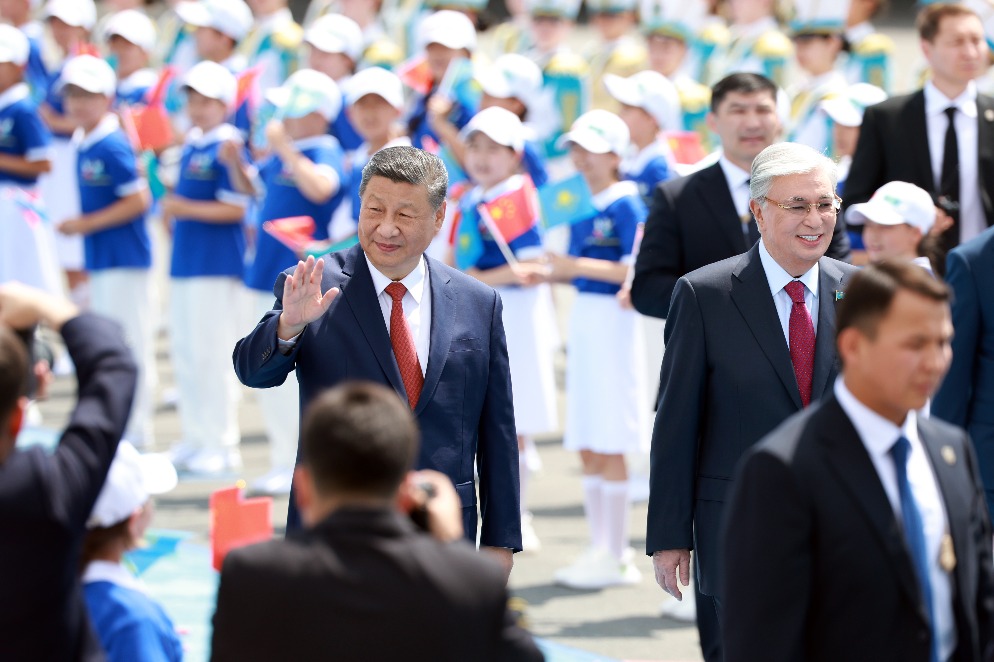Chinese stock exchanges have come of age


Trial-and-error processes of capital market financing are essential for the next phase of China's development
On June 27, Hong Kong Exchanges celebrated its 20th listing anniversary. In 2000, Hong Kong's stock market capitalization was roughly the same as the combined market capitalization of the stock markets in Shanghai and Shenzhen. By June 2020, however, the combined stock market capitalization on the Chinese mainland had become twice that of Hong Kong. A total of 3,893 companies listed on the Shanghai and Shenzhen stock exchanges had reached a market capitalization equivalent to over 60 percent of China's GDP.
In less than three decades, China's stock markets have grown from a negligible size to the second-largest in the world, although still one-third the size of the New York Stock Exchange and Nasdaq put together (46 percent of world market cap).As of April 2020, the combined market capitalization of Shanghai, Shenzhen and Hong Kong markets accounted for 14.4 percent of the total global market capitalization. By comparison, Japan Exchange Group, Euronext and London Stock Exchange accounted for 6 percent, 4.3 percent and 3.5 percent respectively.
US stock markets form a pillar of US financial strength, mainly because the US stock market equity return index has consistently performed better than rival markets, driven in recent years by the rise of US technology stocks. The strength of the US economy and the dollar standard depends on its corporate dynamism, supported by liquid and shareholder-oriented stock markets plus active venture capital investing and corporate takeovers to fund investments in technological innovation.
In contrast, stock market development in China has long lagged behind the development of its banking system. Despite the rapid growth of its stock markets, China's overall financial system remains bank-based. By the end of 2019, the outstanding balance of equity financing on the domestic stock markets by non-financial enterprises only accounted for around 2.9 percent of the aggregate balance of funding from China's financial system to the real economy, leaving Chinese enterprises still bank dependent and highly leveraged.
The initial batches of companies listed on the Shanghai and Shenzhen stock exchanges were largely State-owned enterprises in traditional sectors. Since innovative start-ups and high-tech industries had high risks and limited financial track records, their entry into the mainland exchanges was slow. Many were therefore listed in Hong Kong and 156 of them were listed as American Depositary Receipts (ADRs) in the US market. Thus it was an anomaly for some of the best tech companies of the Chinese mainland to be listed in Hong Kong and the United States instead of on mainland stock markets. This created a situation where mainland investors had to convert renminbi into foreign exchange before buying into their own best companies.
The healthy development of the mainland's stock markets is therefore crucial to promote innovation and deleverage China's corporate sector. Over the years, Chinese policymakers have made considerable reform efforts to reduce the administrative burden and develop a market-oriented "multi-tiered equity market" system to broaden access to capital for China's corporate sector. Among others, the small and medium-sized enterprise board (SME Board) and growth enterprise board (ChiNext) were established at the Shenzhen Stock Exchange in 2004 and 2009 respectively. The science and technology innovation board (STAR) was launched in the Shanghai Stock Exchange in 2019.
With a registration-based IPO system, STAR does not require government approval for companies to be listed and imposes no administrative supervision over the pricing of new issuances. It allows innovative firms to get listed before earning profits. In its first year of operation, STAR listed a total of 140 companies, with a market capitalization of over 2.7 trillion yuan ($387 billion), raising around 218 billion yuan in capital. These companies are fast growing and investing actively in research and development, with their medium revenue growth rate around 20 percent, medium return-on-equity (ROE) around 12.7 percent, and an average R&D intensity around 9.8 percent in 2019.
Following STAR's experiment, ChiNext Board also recently embraced reforms to adopt a registration-based system. With more efficient, market-based IPO processes, China's recent stock market reforms will likely stimulate a new wave of growth for venture capital investing. As China's private equity and venture capital funds achieve a critical size of 2.2 trillion yuan, IPOs have become the preferred exit channel for unicorns and promising start-ups. Meanwhile, both Hong Kong and mainland stock exchanges are likely to benefit from the return to China of the Chinese ADRs listed in New York, due to the rising tensions in the US-China relations.
Chinese investors and institutional players, many of whom now have experience in trading and investing in Hong Kong, New York and elsewhere, are becoming quantitatively and qualitatively more sophisticated. Nevertheless, to forge ahead, China's stock markets still need to address several well-known structural weaknesses. For example, trading activities remain dominated by retail investors who tend to trade frequently and are susceptible to short-termism and speculative herding. Deeper long-term pension and insurance funds are needed. China also lacks an active market for corporate control and must strengthen the corporate governance of listed companies to protect minority shareholders.
For China to narrow the technology gap with global competitors, the dynamic, trial-and-error processes of capital market financing will become more important in the next phase of China's development. Ahead lie many swift currents and deep waters, but the stock markets will certainly help China's real economy cross the rivers of growth.
Andrew Sheng is a distinguished fellow of the Asia Global Institute at the University of Hong Kong and a former chairman of the Securities& Futures Commission of Hong Kong. Li Chen is an assistant professor at the Centre for China Studies and Lau Chor Tak Institute of Global Economics and Finance at the Chinese University of Hong Kong. The authors contributed this article to China Watch, a think tank powered by China Daily. The views do not necessarily reflect those of China Daily.


































